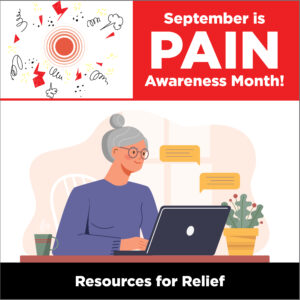Understanding Pain Management: A Comprehensive Guide
Pain is a complex and often debilitating condition that affects millions of people worldwide. It can arise from various sources—whether it’s from an injury, a chronic condition, or an underlying medical issue. Effective pain management is crucial not only for improving quality of life but also for fostering overall well-being. This article aims to shed light on the different aspects of pain management, offering insights into strategies and resources available to help individuals navigate this challenging aspect of health.
 1. Understanding Pain: The Basics
1. Understanding Pain: The Basics
Pain can be categorized into two main types:
- Acute Pain: This type of pain is short-term and often results from a specific injury or condition. It serves as a warning system, signaling that something is wrong. Acute pain typically resolves as the underlying cause heals.
- Chronic Pain: This is long-lasting pain that persists beyond the usual course of acute illness or injury. Chronic pain can be associated with conditions like arthritis, fibromyalgia, or back pain, and it can significantly impact daily life and mental health.
2. The Importance of a Multidisciplinary Approach
Effective pain management often requires a multidisciplinary approach, involving various healthcare professionals working together to address the physical, emotional, and psychological aspects of pain. Key players in a pain management team may include:
- Primary Care Physicians: They are usually the first point of contact and can coordinate care and referrals.
- Pain Specialists: These doctors have advanced training in managing complex pain conditions and may offer specialized treatments.
- Physical Therapists: They help improve movement and function through targeted exercises and therapies.
- Psychologists or Counselors: These professionals provide support for the emotional and psychological aspects of chronic pain.
 3. Common Pain Management Strategies
3. Common Pain Management Strategies
Pharmacological Treatments:
- Over-the-Counter Medications: NSAIDs (like ibuprofen) and acetaminophen can be effective for mild to moderate pain.
- Prescription Medications: For more severe pain, options may include opioids, antidepressants, or anticonvulsants, though these come with risks and should be used cautiously.
Non-Pharmacological Treatments:
- Physical Therapy: Exercises and manual therapy techniques can help alleviate pain and improve function.
- Occupational Therapy: This focuses on enabling individuals to perform daily activities with less pain and more ease.
- Acupuncture: This traditional Chinese practice involves inserting thin needles into specific points on the body to relieve pain.
- Chiropractic Care: Spinal adjustments and other techniques can help manage pain, particularly for back and neck issues.
Lifestyle Modifications:
- Exercise: Regular physical activity can improve strength, flexibility, and overall well-being, helping to manage pain.
- Healthy Diet: A balanced diet can reduce inflammation and support overall health.
- Stress Management: Techniques such as mindfulness, meditation, and relaxation exercises can help reduce the perception of pain and improve emotional resilience.
 4. The Role of Patient Education and Self-Management
4. The Role of Patient Education and Self-Management
Empowering patients with knowledge about their condition and involving them in their own care can lead to better outcomes. Educated patients are more likely to adhere to treatment plans, recognize symptoms early, and make informed decisions about their health.
Self-management strategies include:
- Keeping a Pain Diary: Tracking pain patterns, triggers, and responses to treatments can provide valuable insights for adjusting management strategies.
- Setting Realistic Goals: Working with healthcare providers to set achievable goals can help in measuring progress and maintaining motivation.
- Seeking Support: Joining support groups or counseling can provide emotional support and practical advice for managing chronic pain.
 5. Overcoming Challenges and Seeking Help
5. Overcoming Challenges and Seeking Help
Pain management is not always straightforward, and individuals may face challenges such as treatment side effects, lack of access to care, or difficulties in finding effective therapies. It is essential to communicate openly with healthcare providers, seek second opinions if needed, and explore various treatment options.
Resources for Support:
- Pain Management Clinics: Specialized centers offering comprehensive pain management services.
- Online Communities and Support Groups: These can provide peer support and information on managing pain.
- Educational Resources: Books, websites, and programs that offer information about pain management techniques and research.
Conclusion
Managing pain effectively requires a holistic and individualized approach. By understanding the nature of pain, utilizing a variety of treatment strategies, and staying informed, individuals can take active roles in their pain management. Collaboration with healthcare providers, self-care practices, and support systems are all integral to navigating the complexities of pain and improving overall quality of life. Remember, if you or someone you know is struggling with pain, seeking professional help and exploring available resources can make a significant difference!


 3. Common Pain Management Strategies
3. Common Pain Management Strategies 4. The Role of Patient Education and Self-Management
4. The Role of Patient Education and Self-Management 5. Overcoming Challenges and Seeking Help
5. Overcoming Challenges and Seeking Help

